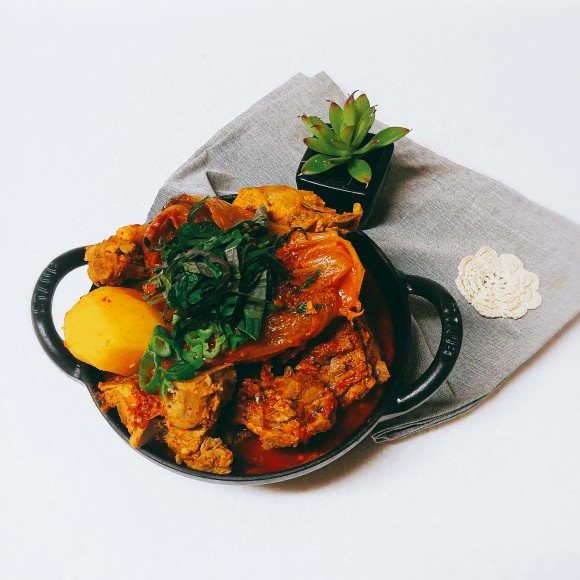Rich & Hearty! Homemade Pork Back-Rib Kimchi Stew Recipe
Baek Jong-Won’s Recipe: Mastering Pork Back-Rib Kimchi Stew with Deep, Savory Broth

Our family’s favorite, this Kimchi Stew features tender pork back ribs slow-cooked to perfection, combined with well-fermented kimchi for a deeply savory and flavorful experience! I often find myself reaching for fresh pork back ribs at the market, inspired by the butcher’s recommendation. It brings such joy to prepare a hearty, homemade meal that makes everyone at home happy. Seeing my family’s delighted faces after enjoying my cooking is the greatest reward as a homemaker and mother.
Main Ingredients- 1kg Pork back ribs
- 1 large head of well-fermented kimchi (aged kimchi)
- Plenty of rice water
- 2 Tbsp Doenjang (fermented soybean paste)
Odor Removal & Seasoning- A pinch of ground black pepper
- 4 Tbsp Gochugaru (Korean chili powder, or adjust to taste)
- 2 Tbsp minced garlic
- A pinch of ginger powder (or 1/2 tsp grated fresh ginger)
- A pinch of ground black pepper
- 4 Tbsp Gochugaru (Korean chili powder, or adjust to taste)
- 2 Tbsp minced garlic
- A pinch of ginger powder (or 1/2 tsp grated fresh ginger)
Cooking Instructions
Step 1
Rinse the fresh pork back ribs thoroughly and soak them in cold water to remove any blood. Let them soak for at least an hour, changing the water occasionally for cleaner results. Proper blood removal is key to a clean flavor without any gamey taste.

Step 2
Before the main cooking, we’ll parboil the pork back ribs. Place the ribs in boiling water and cook for about 5 minutes. This step helps remove impurities and excess fat, reducing any unpleasant odors. After parboiling, rinse the ribs under clean water.

Step 3
Place the rinsed pork back ribs in a pot and cover them generously with rice water. Dissolve 2 Tbsp of doenjang (fermented soybean paste) into the water; this is a crucial step for removing any residual gamey flavors. Add the whole peppercorns, 2 Tbsp of cheongju (rice wine), 1 large leek cut into big pieces, and 4 bay leaves to the pot.

Step 4
Cover the pot and bring to a boil over high heat. Once boiling, reduce the heat to medium-low and simmer for at least 40 minutes to 1 hour, or until the meat is very tender and easily separates from the bone. Skim off any scum or excess fat that rises to the surface during cooking for a cleaner broth.

Step 5
Once the pork back ribs are tender, it’s time to add the seasonings that will define the flavor of the kimchi stew. Add 4 Tbsp gochugaru (chili powder), 2 Tbsp minced garlic, a pinch of ginger powder, and a pinch of black pepper. It’s traditional to add the kimchi whole; this helps the broth become more flavorful, and you can tear it apart as you eat. (Optional: If you enjoy potatoes, add some large chunks at this stage.)



